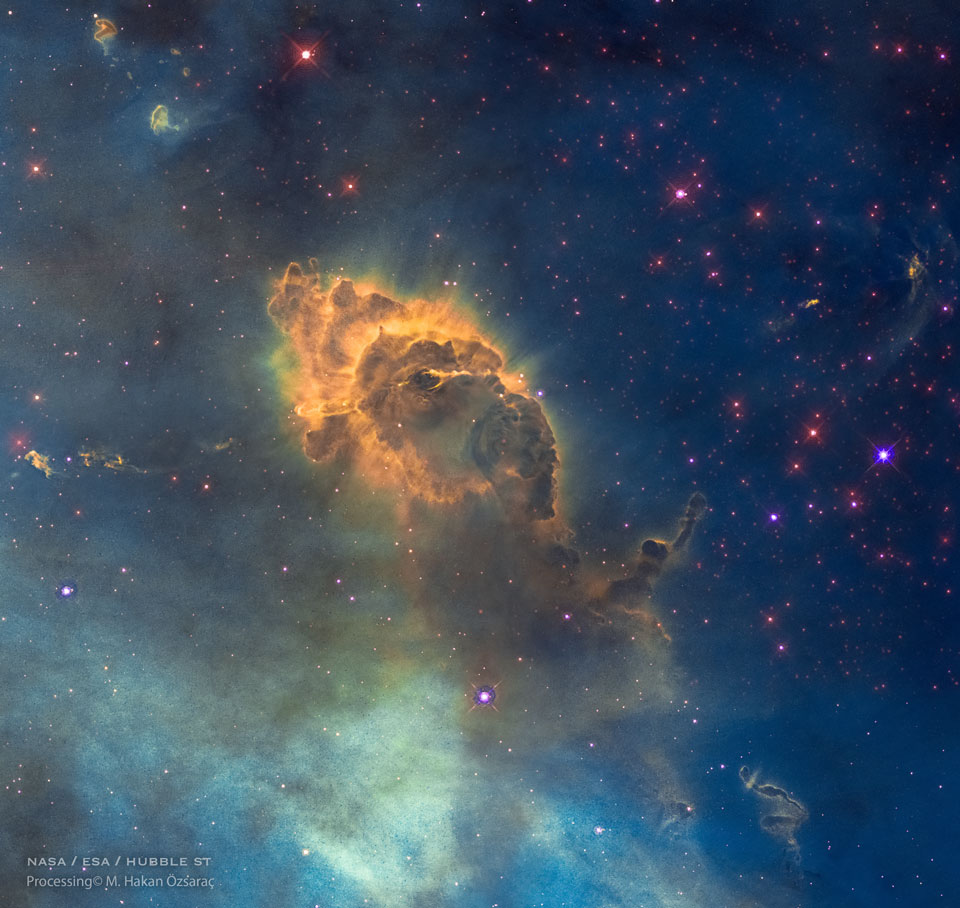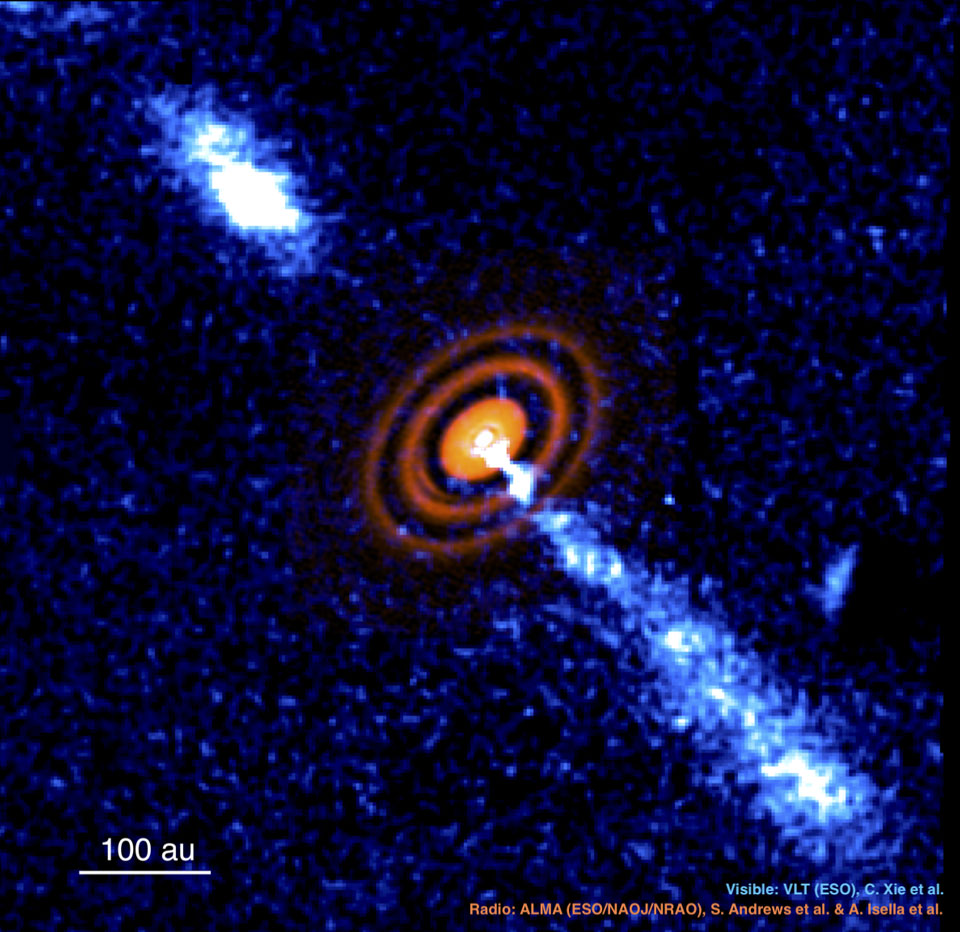韦伯影像: 星际喷流HH 49
A dark starfield is dominated by a red cone-like nebula with its base on the bottom right and extending diagonally through the image. At the peak of the cone toward the upper left is a background spiral galaxy. Please see the explanation for more detailed information.
一片暗淡的星场被一个红色的锥形星云所笼罩,其底部位于右下方,并沿对角线延伸穿过图像。在圆锥顶端的左上方是一个螺旋星系背景。有关更多详细信息,请参阅说明。







